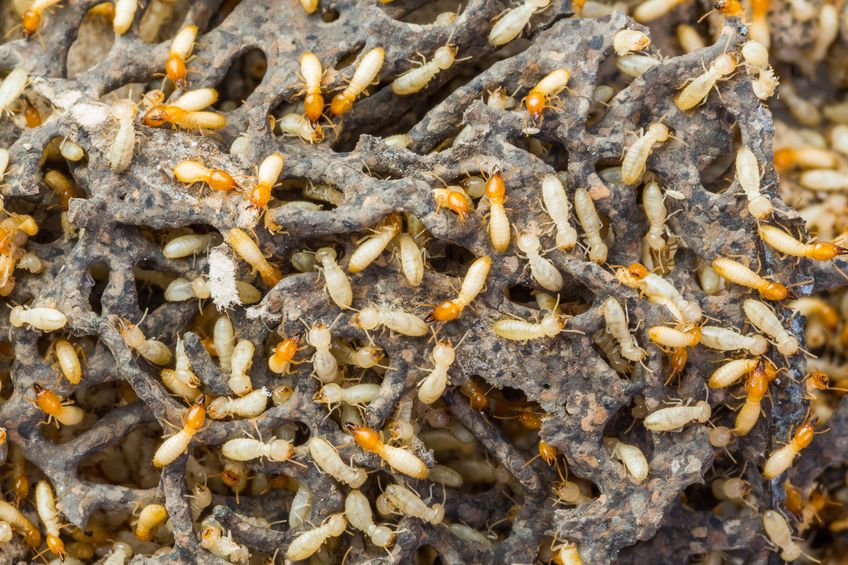Ants are common household pests in Massachusetts, but residents often have a hard time identifying which species is invading their home, as there exists a large amount of nuisance ant species in the state. Some of the most common nuisance ant species that invade homes in Massachusetts include carpenter ants, odorous house ants and pavement ants. Carpenter ants are relatively easy to identify due to their jet-black exterior and large body size, and odorous house ants are obviously known for the odor that they emit. But there exists another common nuisance ant species in Massachusetts that emits a noticeable odor. This species is commonly known as the citronella ant or the yellow ant. These subterranean ants swarm in large number during each summer season, which is why these pests are often mistaken for swarming termites by residents. Much like eastern subterranean termite swarms, citronella ants often swarm near homes and buildings, and it is not uncommon for residents to witness these ants swarming indoors during July and August.
Unlike other odor-emitting insect pest species in Massachusetts, like stink bugs, Asian lady beetles and of course, odorous house ants, many people don’t seem to mind the odor emitted by citronella ants. As their common name suggests, citronella ants emit a citronella or lemony odor when they die, get squished or become threatened. Citronella ants are distributed across the United States, but they are particularly abundant in the east. Two citronella ant species, Lasius claviger and Lasius interjectus, commonly known as the smaller citronella ant and the larger citronella ant respectively, can be found in Massachusetts, but the latter species is most commonly found within homes in the state. These ants often swarm into homes during the summer season, leading many residents to assume that the insects are winged termites. The larger citronella ant worker can be recognized by its small 4 to 4.5 mm size and yellow color, but swarmers are twice as large and vary in color from yellow to reddish brown. Infestations sometimes involve repeated swarms into people’s homes. In these cases, a citronella ant colony likely exists along a home’s foundation where they can easily gain access indoors through cracks and crevices in the foundation. Most infestations that consist of indoor swarms can only be eradicated with professional assistance. Keeping sweet-tasting foods sealed and stored away will help to prevent citronella ant infestations in homes.
Have you ever found a yellow ant either indoors or outdoors?

